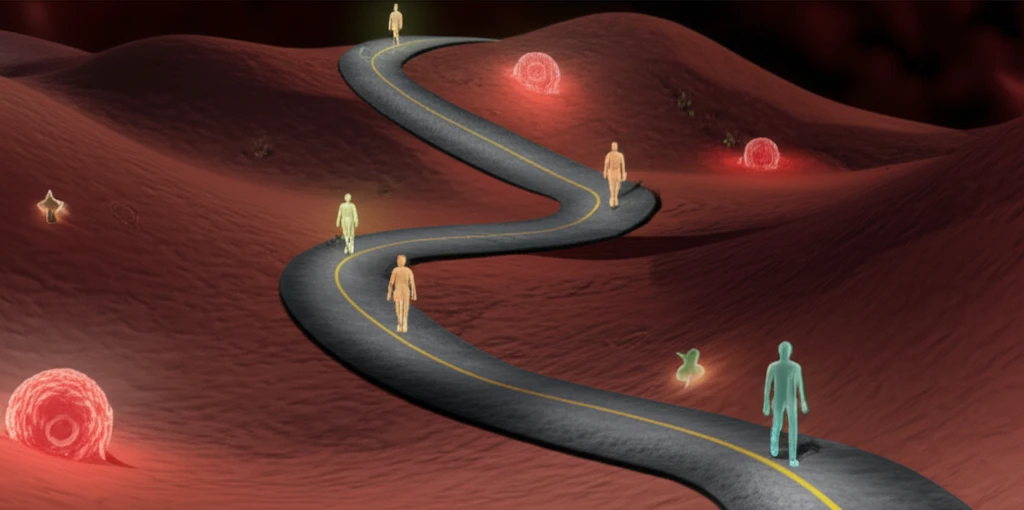
NLR: Your body's silent signal for melanoma recurrence
"Unlocking the secrets of neutrophil-to-lymphocyte ratio (NLR) for early detection and personalized treatment strategies in stage III melanoma patients."
Melanoma, a serious form of skin cancer, affects thousands annually. Once melanoma reaches stage III, where it has spread to regional lymph nodes, managing its recurrence becomes a critical challenge. While treatments have advanced, predicting which patients are more likely to experience a recurrence remains a complex task.
In an innovative stride, researchers have turned to a simple yet powerful marker found in routine blood tests: the Neutrophil-to-Lymphocyte Ratio (NLR). The NLR, which reflects the balance between neutrophils (a type of white blood cell involved in inflammation) and lymphocytes (critical for immune response), has emerged as a significant predictor for various cancers. Now, it's stepping into the spotlight for melanoma.
This article explores how NLR could revolutionize melanoma care, providing insights into personalized treatment strategies. By understanding NLR's predictive capabilities, healthcare providers can make more informed decisions, optimizing treatment plans and improving outcomes for individuals with stage III melanoma. Let's see how this relatively simple blood test parameter helps in early detection and proactive management in cancer care.
Decoding NLR: What the numbers tell you about melanoma recurrence

The Neutrophil-to-Lymphocyte Ratio (NLR) is calculated from a standard blood test, dividing the absolute neutrophil count by the absolute lymphocyte count. But why is this ratio so insightful? Neutrophils increase during inflammation, while lymphocytes combat cancer cells. An elevated NLR often signals a suppressed immune system combined with heightened inflammation—a state conducive to cancer progression and recurrence.
- Early Detection: Identifying high-risk patients early on, allowing for timely intervention.
- Personalized Treatment: Tailoring treatment plans based on individual risk profiles.
- Cost-Effectiveness: Utilizing a readily available and inexpensive blood test.
The road ahead
The journey to fully integrate NLR into melanoma treatment protocols is ongoing. Further large-scale, prospective studies are essential to validate these findings and refine the optimal NLR cutoff values. Researchers are particularly interested in exploring how NLR correlates with long-term overall survival and whether interventions targeting inflammation can improve outcomes for high-risk patients. As we continue to unravel the complexities of melanoma, simple markers like NLR offer valuable insights, bringing us closer to personalized, effective cancer care.
